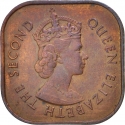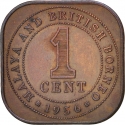You are about to finish your registration. Please check your mailbox (including spam folder). There should be a letter with a confirmation link. Check setting to make sure that your e-mail address is correct.
Send letter again
Obverse

|
The second crowned portrait of HM Queen Elizabeth II facing right, wearing the Girls of Great Britain and Ireland tiara. ELIZABETH II NEW ZEALAND |
|---|---|
Reverse

|
Tuatara lizard with denomination. JB 5 |
| Edge |
5 Cents
2nd portrait
KM# 34
Characteristics
| Material | Cupronickel |
| Weight | 2.83 g |
| Diameter | 19.43 mm |
| Thickness | 1 mm |
| Shape |
|
| Alignment | Medal |
| Alt # |
|






_Pounds_50/1998-2006_01.10.2024_14.38-125.jpg)
_Pounds_50/1998-2006_01.10.2024_14.38_01-125.jpg)